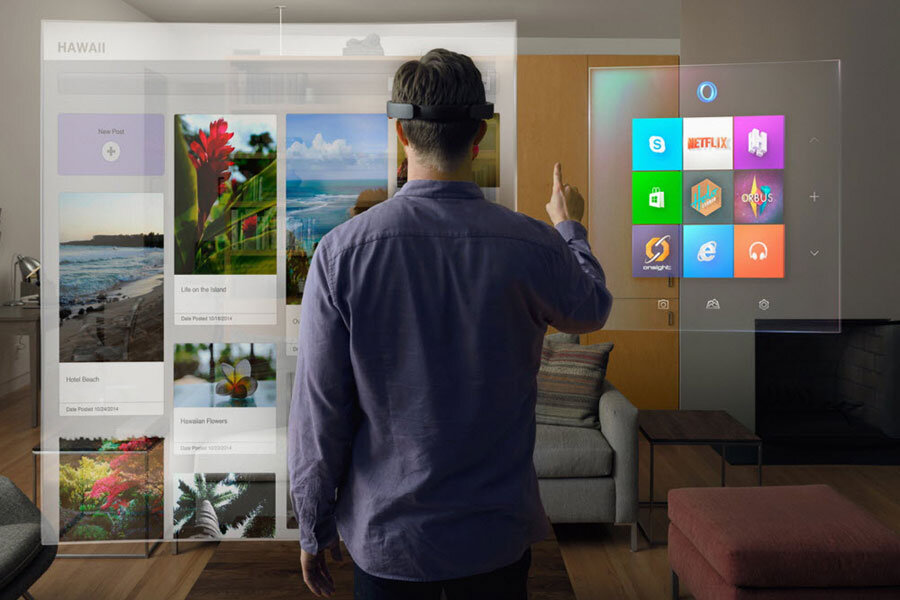Microsoft reveals HoloLens as the battle for VR goggles heats up
Loading...
At Microsoft’s Windows 10 event Wednesday, the company gave the world a first look at the HoloLens. This augmented reality (or “mixed” reality) device falls somewhere between Facebook's Oculus virtual reality headset and (the recently discontinued) Google Glass.
The goggles work by producing interactive, hologram-like images that appear to pop out of thin air in the user’s immediate surroundings. Whether in a living room or an office space, the goggles act as a second layer of reality on top of the physical world in front of the wearer.
Microsoft's promotional video claims the goggles will create the illusion of virtual, adjustable televisions on a wall or Minecraft environments on a kitchen table. The video also shows a father giving his daughter a step-by-step guide to fixing a sink, complete with virtually drawing arrows and diagrams on the woman’s screen.
The circular headset sits on top of the wearer’s head like a crown and has two clear lenses over the user’s eyes. The device works by “tricking the brain” into perceiving light as matter, as the Wired’s Jessi Hempel reports.
“Ultimately, you know, you perceive the world because of light,” says chief inventor of Project HoloLens, Alex Kipman, in an interview with Wired. “If I could magically turn the debugger on, we’d see photons bouncing throughout this world. Eventually they hit the back of your eyes, and through that, you reason about what the world is. You essentially hallucinate the world, or you see what your mind wants you to see.”
HoloLens works by mimicking the way our eyes and brains interpret light. “When you get the light to be at the exact angle,” Mr. Kipman told Ms. Hempel, “that’s where all the magic comes in.”
The HoloLens uses a minimum of four cameras or sensors to give the device a field of vision of 120 degree (left-right) by 120 degrees (up-down). This allows for a wide range of interaction points with the user. Microsoft gave few details on the specifics of the device and its technology, but many point to Microsoft's Kinect 2 for insight into what the wearable device could offer.
Microsoft's original idea for holographic technology was pitched by Kipman in 2008 and eventually yielded the original Xbox Kinect camera. The Baraboo Project, sometimes called “B,” was the codename for a secret hologram project that began five years ago. Though many are looking to the Kinect 2 for clues to how HoloLens works, Kipman insisted to Wired that Baraboo would make the original Kinect look like the “minor league.”
This is a big step for augmented reality technology, but Microsoft seems to be in no rush to get this product on store shelves. The company knows if the voice and gesture controls do not work well, customers will quickly dismiss the device. The only hint given for a release date was that it would happen in the same time frame as the release of Windows 10. The company also mentioned that the device will be priced for consumers and enterprises alike, but gave no exact cost.







